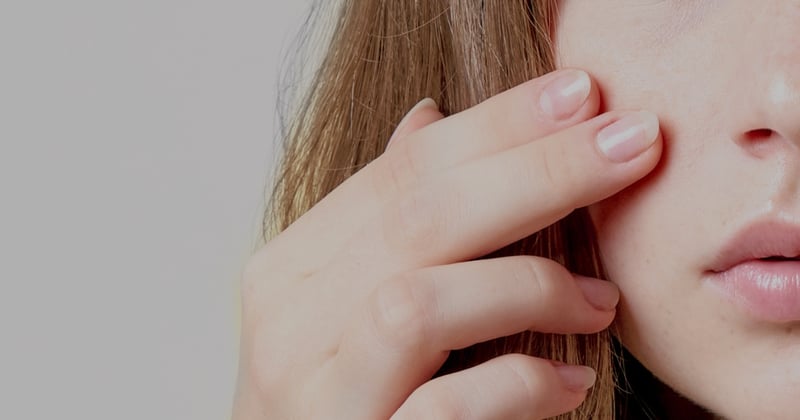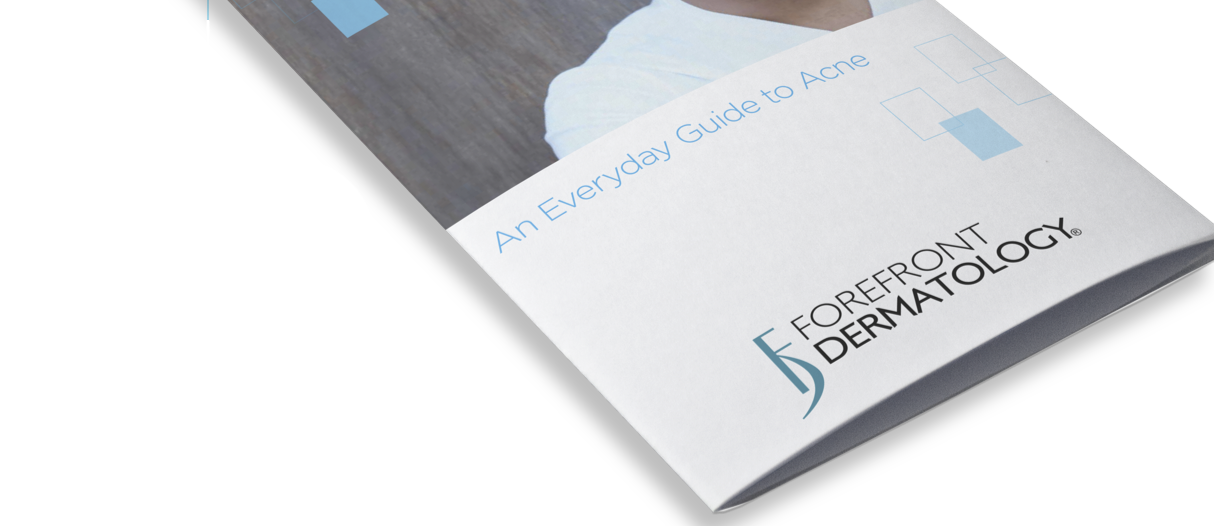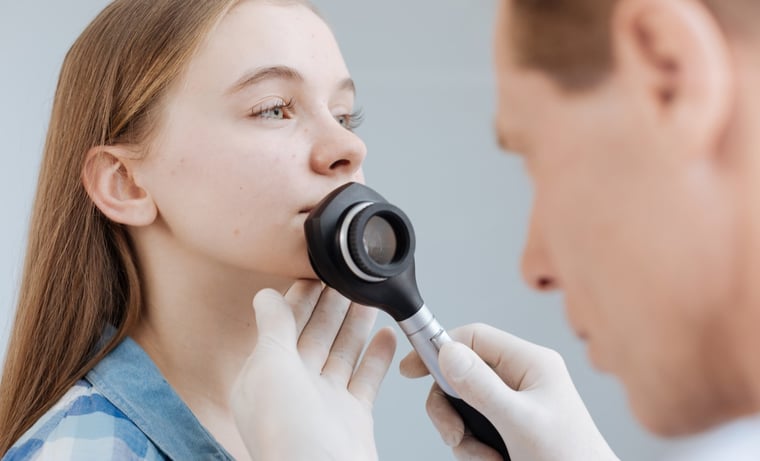

Acne Treatment
in New London, WI
What Is Acne?
According to the American Academy of Dermatology (AAD), acne is the most common skin disorder, and it affects up to 50 million people in the United States each year. Most people develop acne symptoms as teenagers, but it can also develop in adulthood. The AAD estimates that 85% of people between the ages of 12 and 24 have at least minor acne.
But what exactly is acne? It’s an inflammatory skin condition that affects the skin’s hair follicles and oil glands. The acne symptoms you develop are determined by the type of acne you have, and it can form on many areas of the body, including your face, neck, chest, back, and shoulders. Some people may have only mild whiteheads or blackheads, but others may develop large, painful lumps that form deep under the skin.
BOOK NOW
An Everyday Guide to Acne
Download BrochureWhat Are the Types of Acne?
The two types of acne are non-inflammatory and inflammatory. These two categories contain six different subtypes of acne: whiteheads, blackheads, papules, pustules, cysts, and nodules. Whiteheads and blackheads are types of non-inflammatory acne, while papules, pustules, cysts, and nodules are inflammatory types of acne. It’s common for people to have multiple types of acne at the same time. Let’s take a closer look at each subtype of acne and the acne symptoms they cause:
Non-inflammatory Acne
Whiteheads: Whiteheads are also called closed comedones, and they form when pores are clogged by dead skin cells and oil. They’re closed at the surface of the skin and appear as a small white bump. Since whiteheads can’t be removed by squeezing them, you shouldn’t try to pop them. Trying to squeeze a whitehead can damage your skin, possibly leading to scarring.
Blackheads: Blackheads are known as open comedones because the top of the pore stays open. Since the rest of the pore is clogged, blackheads appear as small black dots at the surface of the skin. Just like whiteheads, blackheads develop when pores are clogged with oil and dead skin cells. Although you can remove a blackhead by squeezing it, this isn’t recommended by dermatologists because it can cause scarring.
Inflammatory Acne
Papules: Papules appear as small red bumps on the skin that are very tender to the touch. They occur when comedones become inflamed and bacteria, oil, and dead skin cells get trapped under the surface of the skin. It’s common for papules to cluster together, creating an appearance that looks similar to a rash. You should never try to squeeze papules because it can worsen the inflammation and cause scarring.
Pustules: Pustules are very similar in appearance to papules, but the primary difference between the two is that pustules contain pus. This results in a bulging bump at the surface of the skin that is white or yellow in appearance. Only your dermatologist can drain pustules. Attempting to squeeze pustules can lead to dark spots on the skin and cause the bacteria to spread.
Nodules: Nodules develop deep within the skin and are usually quite painful. They appear as large, hard bumps that feel firm when you touch them. Nodules form when bacteria travel deep into the pore and cause an infection.
Cysts: Cysts are considered severe acne, and they appear as large, red lesions that are filled with pus. Cysts are similar in appearance to boils and are often very painful. They develop when there is an infection deep under the skin, and they also have the largest risk of permanent scarring compared with other types of acne.
How Is Acne Treated?

Acne treatment varies for each person and depends on the type of acne you have and its severity. If you have whiteheads or blackheads, your dermatologist may recommend products containing salicylic acid or topical retinoids derived from vitamin A, such as tretinoin (Retin-A) or adapalene (Differin). Treatments containing these ingredients work by exfoliating the skin and encouraging cell turnover, removing dead skin cells before they can clog your pores. If you have multiple whiteheads in one spot, you can also use an acne spot treatment containing benzoyl peroxide.
If you have pimples and blemishes, your dermatologist may recommend products containing benzoyl peroxide or salicylic acid for acne treatment. These products are usually applied to your entire face, although some are designed for acne spot treatment. In addition to fighting inflammation and controlling oil production, products with these ingredients can treat existing acne and prevent new blemishes from forming.
For larger pustules and papules, your dermatologist will likely prescribe an acne medication, such as an oral antibiotic, to treat bacteria and soothe inflammation.


This is especially helpful if you have acne on other parts of your body, such as your back, chest, or neck, since widespread acne is easier to treat with prescription medication. Products containing benzoyl peroxide can also be an effective acne treatment for pustules and papules.
Severe acne, such as nodules and cysts, can only be treated by a dermatologist and a prescription acne medication. Many dermatologists prescribe isotretinoin for people who have nodules and cysts. This is an oral retinoid that inhibits the growth of bacteria, reduces oil products, and soothes inflamed skin, helping it heal.
Since hormones also play a role in the development of acne, especially for women, your doctor may prescribe birth control pills to control and treat acne. Research has shown that birth control pills are just as effective as oral antibiotics for treating acne in women.
Skin Care Tips for Managing and Preventing Acne
In addition to increasing your risk of skin cancer, the sun also can aggravate acne. Be sure to protect your skin from the sun and apply an oil-free sunscreen every day. This is especially important, since some acne treatments make your skin more susceptible to damage from the sun.
Make sure you’re consistently using your prescription or over-the-counter treatments. According to the AAD, it can take four to six weeks before you start seeing signs of improvement from topical treatments. Applying topical treatments consistently is crucial to treating and preventing acne.
Avoid the urge to pop or squeeze pimples. In most cases, this forces the bacteria even deeper into your skin, leading to increased inflammation, scarring, and even an infection.
Research has shown that stress has an effect on acne, so it’s important to manage your stress levels.
1 Location in the New London, WI area
Booking an appointment has never been easier.
Available 24/7.


